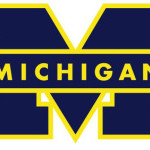- 行业: Education
- Number of terms: 31274
- Number of blossaries: 0
- Company Profile:
1. Anything that serves the three basic purposes of money: medium of exchange; store of value; unit of account. 2. In modern economies, a currency issued by an agency of government. 3. As an adjective, "money" refers to the value of something denominated in the prevailing currency and not corrected for inflation; contrasts with real.
Industry:Economy
A money supply that is larger than people want to hold at prevailing prices, perhaps because of shortages or rationing of goods in the past. This was said to be a major cause of inflation in Russia after the fall of the Soviet Union, which left an excess of money in circulation.
Industry:Economy
A market structure in which there are many sellers each producing a differentiated product. Each can set its own price and quantity, but is too small for that to matter for prices and quantities of other producers in the industry.
Industry:Economy
A market structure in which there is a single buyer. Term introduced in Robinson (1932).
Industry:Economy
A loan the collateral for which is a house or other real estate. I would not have thought this term needed to appear in a glossary of international economics, until 2008 when we learned that mortgage-backed securities had been traded internationally and were contributing to the global financial crisis when borrowers defaulted.
Industry:Economy
A financial instrument that packages the ownership of shares in a large number of mortgages.
Industry:Economy
A free-trade equilibrium in the Heckscher-Ohlin Model in which prices are such that all goods cannot be produced within a single country, and instead there are multiple diversification cones. This, or a two cone equilibrium, will arise if countries' factor endowments are sufficiently dissimilar compared to factor intensities of industries. Contrasts with one cone equilibrium.
Industry:Economy
A model with more than two factors. In the context of trade theory this is likely to mean a Heckscher-Ohlin Model with more than two factors.
Industry:Economy
An agreement (OMA) among developed country importers and developing country exporters of textiles and apparel to regulate and restrict the quantities traded. It was negotiated in 1973 under GATT auspices as a temporary exception to the rules that would otherwise apply, and was superseded in 1995 by the ATC.
Industry:Economy
